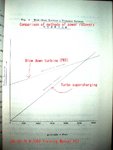Clay_Allison
Staff Sergeant
- 1,154
- Dec 24, 2008
What obstacles prevented these from being developed earlier? It seems like this modification added to many existing engines (like the Allison) would have pushed it back into contention with the Merlin and 605. It's an amazing thing to me, a little turbine that gives free power by eating exhaust gas.
(Turbo Compound) it won't let me edit the title.
(Turbo Compound) it won't let me edit the title.

